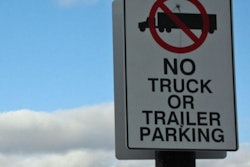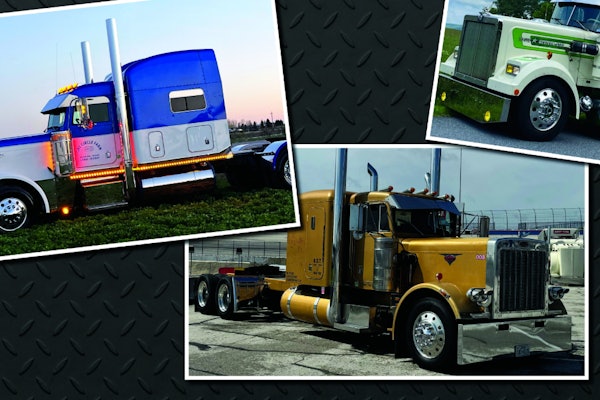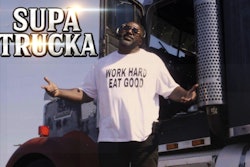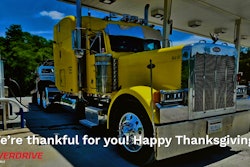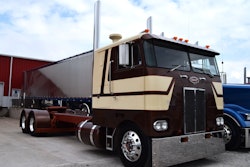Several teams were on hand in October at Talladega Superspeedway to test the Car of Tomorrow.
Not Ready Yet
As the 2006 NASCAR Nextel Cup season wound down, 11 teams converged on Talladega Superspeedway to do a full day of extensive testing on the Car of Tomorrow. The focus was on experimenting with various restrictor plate sizes and wings, as well as seeing how the car performs in the draft.
By 2009 the Car of Tomorrow will be the standard issue vehicle in all Cup events.
“We started with a 15/16-inch plate and progressed to a 1-inch plate,” NASCAR Nextel Cup Series Director John Darby says. “We actually were doing a whole matrix of plate changes, but we also know there’s a lot that sits under the plates that dictates speeds.”
There have been rumors that with the implementation of the Car of Tomorrow, restrictor plates could be phased out at the two tracks at which they are used, Talladega and Daytona.
Darby says that isn’t the case.
“The concept is eliminating specialized restrictor plate engines,” Darby says. “I don’t think the elimination of the plate is possible, but we can eliminate the specialization.”
Darby says the Talladega test allowed for some reverse engineering.
“Instead of starting with the plate first, we started with the gear rule first,” Darby says. “The key is using several different combinations until we find the sweet spot between the two.

“Once we do, it’ll help team owners because then they won’t have to worry about several different plate combinations.”
The gear rule covers the rear-gear ratio between the ring and pinion gears in the rear drive. Each week, NASCAR specifies two gear ratios, a high and low, giving teams an option of which to use.
The drivers who did the testing weren’t overly enthusiastic about the extra work – or the prototype.
“It’s been like watching paint dry,” Ford driver Greg Biffle says. “It’s costing us a tremendous amount of time and money to do this, when we could be working on getting ready for (the next race). But if you want to play this sport, this is what you have to do.
“I thought it’d be a lot different. But there are no frills or thrills. It feels the same as it did driving the Cup cars.”
The biggest complaint was speed. Since the plate/gear combo has yet to be determined, the cars are slower than what the drivers are used to.
“We were a good 5 miles per hour slower than what we ran in (Talladega’s October Nextel Cup race),” says Jamie McMurray, also a Ford pilot. “And I didn’t feel like the cars drove better. You still get loose when guys get in your rear quarterpanel. Really, I think this test is more for NASCAR than for us.”
After spending much of the morning tweaking the cars, the drivers took to the track for drafting work in the afternoon.
“The speeds will change depending on the plate,” McMurray says. “And obviously you’ll pick up more speed in the draft than running around by yourself. The cars are pretty trimmed out right now with the wings and the splitter in the front, so I don’t think there’s a lot you can do to the car to make it quicker.”
The COT has been developed over the past five years by NASCAR’s Research and Development Center. Safety innovations, performance and competition, and cost efficiency are the primary reasons for its invention.
The COT will begin competition at the spring race at Bristol Motor Speedway and will be featured at 16 different events this season.
The 2008 Car of Tomorrow schedule includes 26 events, and teams will run the entire 2009 schedule with the vehicle.
The Old College Try
NASCAR visits universities to improve sport’s diversity
As part of its diversity program, NASCAR closed out the 2006 season with the NASCAR College Tour, beginning at Alabama State University in Montgomery, Ala. The tour, in its sixth year of existence, visited four Historically Black Colleges and Universities (HBCU) and Hispanic Serving Institutions (HSI) to raise awareness about the NASCAR industry and the career opportunities available.
Students got an in-depth look at the business side of NASCAR as presented by a panel of industry executives, and select students will have the opportunity to earn scholarships. In addition, NASCAR and partnering companies collected resumes from students to help with internships and job placement within the industry. The programs are open to all students and are free of charge.
“Since 2001, the NASCAR College Tour has been visiting HBCUs and HSIs across the country to expose diverse college students to NASCAR,” says Marcus Jadotte, NASCAR managing director of public affairs, who oversees the diversity department. “The College Tour has been a great vehicle for bringing the world of NASCAR to students that may have not been aware of the different opportunities available in all aspects of the industry. With the help of Coca-Cola, UPS, Drive for Diversity and Enterprise we are able to introduce these students to other NASCAR diversity initiatives such as the NASCAR Diversity Internship Program and the Wendell Scott Scholarships.”
At each school visit, three pre-selected students competed for a NASCAR scholarship presented by UPS. Each student made a presentation on NASCAR, diversity and corporate America-related opportunities.
Along with the educational aspects of the College Tour, NASCAR has an on-campus presence all day, including simulators, show cars, informational booths and raffles and giveaways. Students can also view a College Tour video voiced by hip-hop pioneer and radio personality Funkmaster Flex.
“We are really excited about NASCAR bringing the College Tour to our campus,” says William Brock, Alabama State University vice president for institutional development. “This event will help our students think differently about jobs and internships within NASCAR’s industry. The NASCAR College Tour presented by Coca-Cola will add a fresh twist to our campus, and working together with NASCAR and their partners will help develop a great relationship between the world of motorsports and Alabama State University.”
The 2006 NASCAR College Tour also visited Winston Salem State University, Virginia Union University and the University of Texas El Paso.




